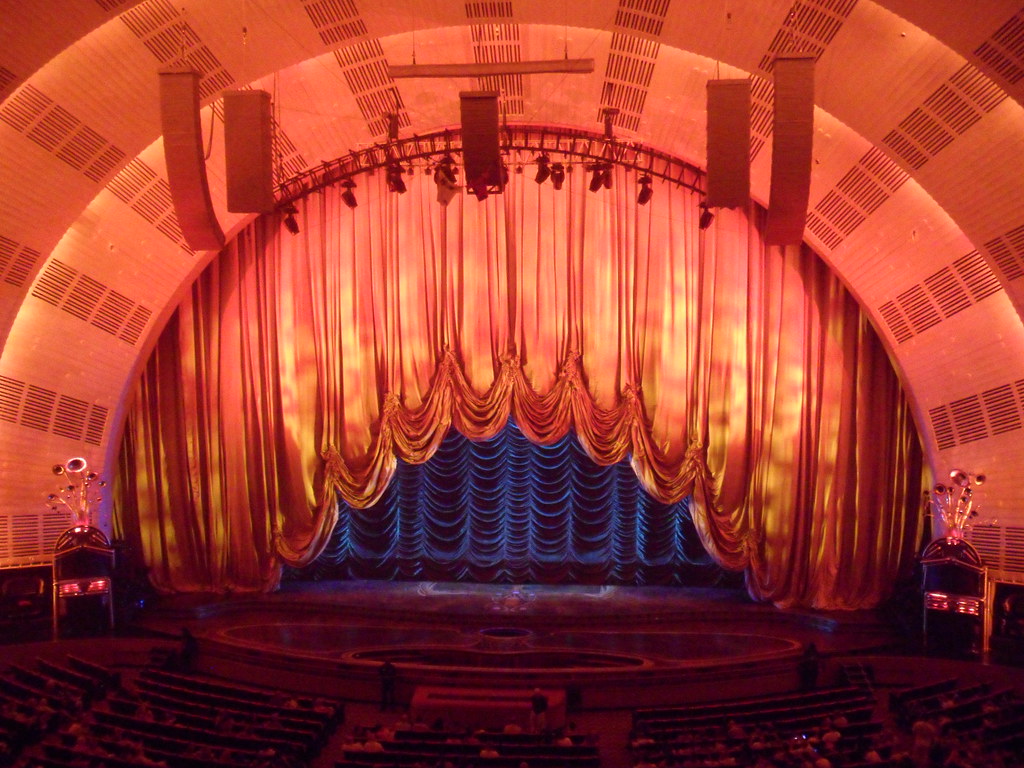On June 9th, Ali Stroker made history when she became the first performer in a wheelchair to receive a Tony Award. Winning ‘Best Performance by a Featured Actress in a Musical’ for her portrayal of the boisterous Ado Annie in the Broadway revival of Rodgers and Hammerstein’s Oklahoma!, Stroker dedicated her award to “every kid who is watching tonight who has a disability, who has a limitation or a challenge, who has been waiting to see themselves represented in this arena.” Although award nominees typically wait in the audience until the winner’s name is called, Stroker was backstage, having just performed a solo as a part of the evening’s festivities. This was fortuitous: later in the evening, Stroker was unable to celebrate in the spotlight with the cast and crew of Oklahoma! after their production won ‘Best Revival of a Musical’ – the stage of Radio City Music Hall has no wheelchair-accessible ramp.
This story highlights two important issues regarding contemporary ableism: problematic representation in the entertainment industry and an overall lack of access.
Regarding the first, the fact that Stroker’s win is historic at all highlights the lack of attention that Hollywood and Broadway have given to disabled performers. Despite the fact that portrayals of disabled characters routinely receive critical acclaim, essentially all of the actors receiving those awards have been able-bodied. By the Washington Post’s count, roughly half of Best Actor Oscars, for example, have been given for depictions of people with disability or illness – but none of the actors awarded have been actual members of the disabled communities they portrayed.
At best, this sort of production choice encourages inaccurate portrayals by non-experts and perpetuates stereotypes about disabled individuals; at worst, it turns disability into a plot device to be overcome (or, even worse, into punishment for a perceived villain). For example, the 2017 film The Shape of Water was heavily criticized for its clunky depiction of American Sign Language and its explicit comparison of its disabled main character with an inhuman monster – the movie won four Academy Awards and was nominated for an additional eight. Or consider how the three-time Tony-Award-winning musical Wicked treats its character Nessarose: living in a wheelchair, the wicked Nessa not only repeats the overplayed trope of “deformity of body equals deformity of soul,” but her explicit request to be “cured” by her magical sister, in the words of Towson University’s Beth Haller, underscores the “underlying ableist message that disabled people are broken and need to be fixed.”
So, while Stroker’s success is wonderful and much deserved, it comes from within an entertainment industry rife with a problematic relationship to portrayals of disability. Representation of society’s diversity in popular culture is important for many reasons; matters of accuracy and tone are just a few.
Secondly, the inaccessibility of the Tony Awards’ stage prevented Stroker from experiencing the honored tradition of an award winner walking down the aisle while the audience applauds their success – to say nothing, of course, of her literal inability to accept the second award along with the rest of the cast and crew. As Melissa Blake explained for CNN, “For all the talk about inclusion and representation, the disability community continues to remain merely an afterthought, where places are made accessible only after people with disabilities bring it to others’ attention that they can’t get into a building or onto a stage.”
Instead of useful accommodation and equitable treatment, disabled citizens are often the recipients of technological gizmos that do more for the inventors’ social graces than the needs of the purported users. Dubbed ‘disability dongles’ by advocate and strategist Liz Jackson, devices that claim to do everything from translating written text for those who cannot see it to translating sign language into spoken words make waves on social media, but ultimately do quite little to help those who actually use sign language or have difficulty seeing. In most cases, people with disabilities simply don’t need the help – suggesting otherwise can be insultingly patronizing, if not obviously unnecessary. What would be preferable: providing a $33,000 stair-climbing Scewo (as heralded by dozens of international news outlets) to wheelchair users around the world, or simply building more ramps for them to use?
What if Stroker had been driving a Scewo on the night of the Tonys? Though she would have been able to access the stage from the audience, the expensive device climbs much too slowly for the fast-paced production of the televised broadcast; by the time Stroker would have made it to the podium, she likely would have had no time for her speech. And though it moves quickly enough on its own when not navigating stairs, it seems like a motor-powered wheelchair would actually limit Stroker’s mobility during the fast-paced dance numbers of her production (never mind what might happen were it to malfunction). Though some able-bodied people might feel pleased to hear about flashy dongles aimed to help others, such gadgets run the risk of diffusing our sense of corporate – and, indeed, our personal – responsibility to promote a just society.
Re-designing our public architecture to be more representative of the needs of all citizens is far easier, cheaper, and effective at treating every person fairly than is investing in complicated and expensive new technologies that don’t actually solve real problems. As Stroker explained to the New York Times following her win, “I think I had a dream that maybe there could be a ramp built. It’s more than just a logistical thing — it’s saying that you are accepted here, in every part of you.”
The industry would do well to listen.

